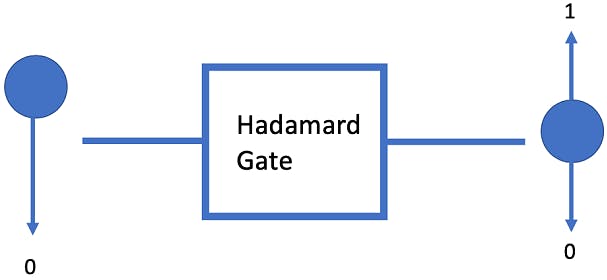
Unlocking the Power of Quantum Computing: How It Works and What It Could Mean for the Future
Quantum computing is a revolutionary technology that has the potential to change the way we process and analyze data. In simple terms, quantum computers use quantum bits or qubits to perform computations, which allows them to solve problems that are difficult or impossible for traditional computers. In this blog post, I will explain how quantum computing works using local examples that anyone can understand.
To understand quantum computing, we first need to understand how traditional computers work. Traditional computers use bits to represent information. A bit can be either 0 or 1, and these values are used to perform calculations and store data. For example, when you type a letter on your computer keyboard, it is converted into binary code (a series of 0s and 1s) and stored as a series of bits.
Now, let's talk about quantum computing. Quantum computers use qubits instead of bits. A qubit can be in a state of 0, 1, or both at the same time. This is called superposition, and it is one of the key features of quantum computing. To understand superposition, let's use an example that is familiar to most of us - flipping a coin.
When you flip a coin, it can either land heads or tails. In traditional computing, a bit is like a coin - it can only be in one of two states at a time. But in quantum computing, a qubit is like a coin that can land both heads and tails at the same time. This means that a qubit can be in multiple states simultaneously, which allows quantum computers to perform calculations on all possible values at once.
Another important concept in quantum computing is entanglement. Entanglement occurs when two qubits become linked in such a way that the state of one qubit affects the state of the other. This effect happens regardless of the distance between the qubits, and it occurs instantly, faster than the speed of light.
To understand entanglement, let's use an example that is closer to home. Imagine that you and your friend have two boxes, each containing a card that is either red or black. You don't know what color your friend's card is, and your friend doesn't know what color your card is. However, if you open your box and see that your card is red, you automatically know that your friend's card must be black. This is similar to how entangled qubits work. When you measure one qubit, you automatically know the state of the other qubit, regardless of the distance between them.
Now that we have a basic understanding of superposition and entanglement, let's talk about how quantum computers use these principles to perform computations. Quantum computers use a series of gates to manipulate the state of qubits. These gates operate on qubits to perform computations and produce results.
One type of gate used in quantum computing is the Hadamard gate. The Hadamard gate puts a qubit into a superposition state. For example, if you apply the Hadamard gate to a qubit that is in the state of 0, it will become a superposition of 0 and 1. This means that the qubit is now in both states at the same time.
Another gate used in quantum computing is the CNOT gate. The CNOT gate is used for entanglement. It takes two qubits as input, and the output qubit is entangled with the input qubits. The CNOT gate is used in quantum error correction and quantum teleportation.
So how do quantum computers solve problems that are difficult for traditional computers? Quantum computers can use a process called quantum parallelism to perform calculations on all possible inputs at once. This means that a quantum computer can evaluate many possible solutions simultaneously, which makes it much faster than traditional computers for certain types of problems. For example, let's say you have a large dataset and you want to find a specific item in that dataset. With a traditional computer, you would have to search through the dataset one item at a time. But with a quantum computer, you can use quantum parallelism to search through all possible items at once. This can significantly speed up the process and make it more efficient.
One of the most well-known algorithms in quantum computing is the Shor's algorithm, which is used to factor large numbers. Factoring large numbers is an important problem in cryptography, and traditional computers can take a very long time to factor large numbers. But with Shor's algorithm, a quantum computer can factor large numbers much faster. This has important implications for cybersecurity and encryption.
Another algorithm used in quantum computing is Grover's algorithm, which is used for database search. Grover's algorithm allows a quantum computer to search through an unsorted database much faster than a traditional computer. This can have applications in fields such as data mining and machine learning.
So why aren't we all using quantum computers yet? There are several challenges that still need to be overcome before quantum computers can become widely available. One of the biggest challenges is the issue of quantum decoherence. Decoherence occurs when the qubits in a quantum computer become disturbed by their environment, which can cause errors in the computation. This is a major challenge for quantum computing, and researchers are working on ways to reduce the effects of decoherence.
Another challenge is the issue of scalability. Current quantum computers are still relatively small, with only a few dozen qubits. To solve complex problems, we would need quantum computers with thousands or even millions of qubits. This requires the development of new technology and materials that can support large-scale quantum computing.
In conclusion, quantum computing is a fascinating and rapidly evolving field that has the potential to revolutionize the way we process and analyze data. While there are still many challenges to overcome, researchers are making significant progress in developing new quantum technologies and algorithms. As we continue to explore the possibilities of quantum computing, we may discover new and exciting ways to solve some of the world's most complex problems.




